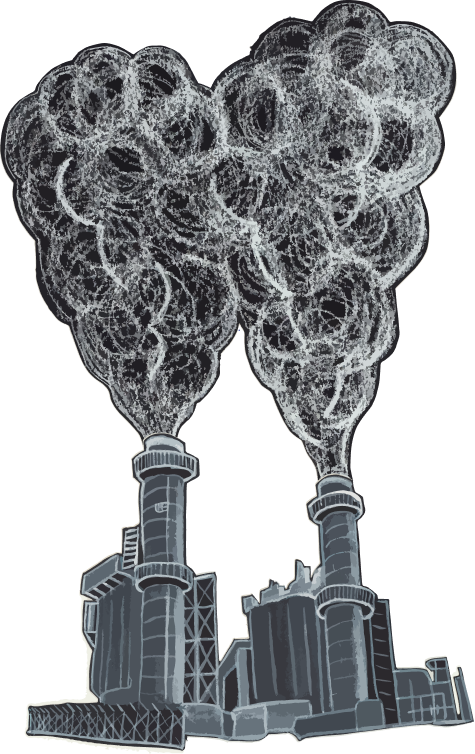Virginia
Back to mapTo get to zero by 2050, Virginia must cut climate pollution by
4.5 million metric tons of CO2 equivalent a year.
Emissions in Virginia
Million metric tons of carbon dioxide equivalent (MMTCO2e) emissions
Note: Grey area indicates missing data due to processing delays.
Source: WRI, Mar 2021
This is how we're going to do it.
Source: WRI, Mar 2021
- Boilers and furnaces with heat pumps
- Gas stoves with induction ranges
- No-till farming to keep CO2 in the soil
- Capturing methane leaks from landfills
- Capturing CO2 to make emissions-free concrete
- Burning green hydrogen to make emissions-free steel
- Plugging methane leaks from gas pipelines
Decarbonize Our Buildings
10% of Virginia's climate pollution comes from buildings.
We burn fossil fuels to heat our air, water, and food.
To cut this pollution...
Let's electrify our heat!
We'll replace...
...in all of Virginia's 3.1 million buildings.
In fact, 55% of buildings in Virginia are already fossil fuel free!
That means we only need to electrify the remaining 1.4 million dirty buildings in Virginia. That's around 50,000 per year.
Source: Microsoft, Mar 2021; NREL, Dec 2021Electrifying all buildings cuts 10% of the pollution.
Decarbonize Our Transport
39% of Virginia's pollution comes from cars, trucks, trains, and planes.
But mostly from cars.
To cut this pollution,
your next car must be electric.
Or consider going car-free with public transit, bikes/e-bikes, car share, or other alternatives!
There are 3.1 million vehicles in Virginia and 21,000 are already electric (0.7% of the total).
We need to electrify (or replace) the remaining 3.0 million gas-powered vehicles. That's around 109,000 a year.
Source: DOT, Feb 2021Electrifying all transportation cuts 39% of the pollution.
Decarbonize Our Power
24% of Virginia's pollution comes from burning coal, gas, and oil to make power.

To cut this pollution...
Put solar panels on your roof!
Then, we'll replace all fossil fuel power plants with solar and wind farms.

...and find good jobs for those workers.
Current Fossil Fuel Power Plants in Virginia
6 coal plants
Clover Power Station
Halifax County
848 MW
Virginia City Hybrid Energy Center
Wise County
668 MW
Birchwood Power Facility
King George County
258 MW
Spruance Genco, LLC
Richmond City County
230 MW
City Point Energy Center
Hopewell City County
115 MW
RockTenn West Point Mill
King William County
101 MW
28 gas plants
Possum Point Power Station
Prince William County
2,082 MW
Chesterfield Power Station
Chesterfield County
1,800 MW
Greensville County Power Station
Greensville County
1,773 MW
Warren County Power Station
Warren County
1,472 MW
33 oil plants
Yorktown Power Station
York County
1,257 MW
Chesapeake
Chesapeake City County
812 MW
Commonwealth Chesapeake
Accomack County
403 MW
Low Moor
Alleghany County
83 MW
But wait!
It's not enough to replace our power plants with wind and solar farms.
To power our electric cars and buildings, we need two times the electricity we have today.
In all, we'll need to build 8,000 Megawatts of wind power and 9,000 Megawatts of solar power.
Since Virginia already has 6 Megawatts of wind and 420 Megawatts of solar, that's 8,000 Megawatts of wind power we need to build and 8,000 Megawatts of solar power. That's around 298 Megawatts of wind power and 292 Megawatts of solar power a year.
Source: EIA, Apr 2022Decarbonizing all dirty power cuts 24% of the pollution.
And gives us zero-emissions power we need to eliminate pollution from buildings and cars!
Other Emissions
The last 27% of Virginia's climate pollution comes from other sources...
This includes farming, landfills, industry, and leaks from gas pipelines.
There's no one solution to solve these problems, but there are lots of great ideas:
Ready to do your part?
Learn how to electrify your own machines and pass local policy to electrify the rest
Take Action